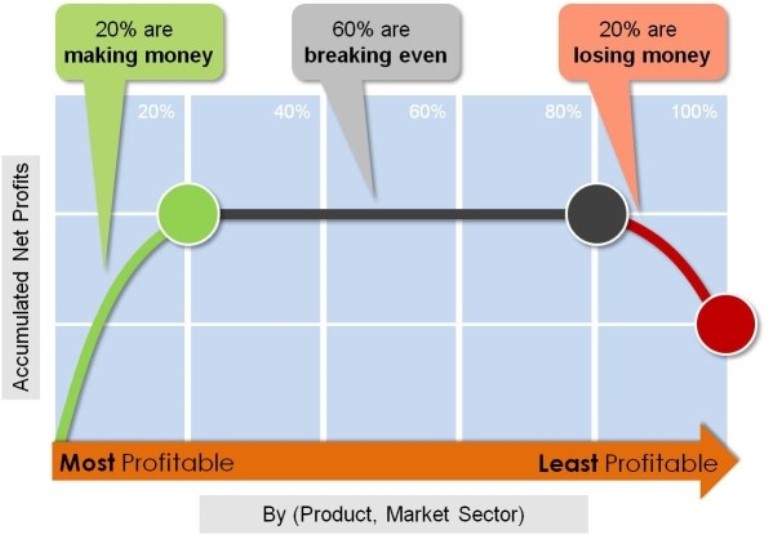
If you ask the owner or chief executive of a private company whether all of the company’s customers are profitable, most will respond “yes.” The reason is that they’ll look at their income statement and see margins of, say, 25 percent and mistakenly assume that number represents the profitability of all their customers. We know better.
It is easy to assume that all customers contribute equally to margins when, in fact, we all know that what shows up on your P&L is an average margin of all your customer interactions. In reality, there are many above the average and many below the average.
To properly analyze customer profitability, it is necessary to consider the costs to serve each customer. This involves going beyond basic product costs and considers other variables such as special handling, returns, rework, shipment sizes, dedicated resources and equipment, breakage, set up time, freight efficiency, etc.
When analyzing these variables, drill down into the cost drivers to serve your customers and, more importantly, the activities you are undertaking to serve each customer. A common mistake here is allocating costs based on sales volumes and not the specific activities involved in serving a customer. Understanding the key cost/activity drivers is essential to understanding what it truly costs to serve a customer. Most companies we have done this analysis for are shocked when they see the results and the answers about which customers are profitable usually become obvious.
This analysis is supported by a 2001 study conducted by Harvard Business School professors Robert S. Kaplan and V.G. Narayanan. It found that “Generally, the top 20 percent of customers generate 150 to 300 percent of the total profits, whereas the middle 70 percent of customers break even and the bottom 10 percent of customers reduce firm profits by 50 to 200 percent.”
The following chart illustrates the conclusions from this research, which demonstrates that we all have some portion of customers that we would be better off without.

The takeaway here is that all customers are not created equal. Our work with clients supports this notion. The question then becomes what you do about it. We believe the answer is to be discriminating with different customer groups in terms of pricing, terms, delivery preferences, etc. Too many companies make the mistake of treating all their customers the same when their treatment should be based on how they contribute to the company’s profit.
 Mario O. Vicari is a director with Kreischer Miller and a specialist for the Center for Private Company Excellence. Contact him at Email.
Mario O. Vicari is a director with Kreischer Miller and a specialist for the Center for Private Company Excellence. Contact him at Email.
You may also like:


